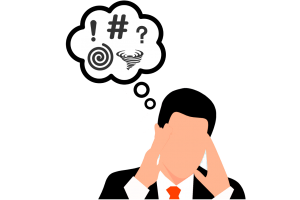I know it may not feel like it, but it’s time to stop and focus on getting traffic.
Why It’s Time to Stop (For Now)
There is still so much to learn, and your instinct may be to want to keep learning.
Right now, you have everything you need to get traffic. From doing keyword research, to writing high-quality content, to incorporating one method of promotion, all these steps are going to move traffic to your site as long as you stick with the process. Focusing on other things will unnecessarily complicate things.
If you worry about how perfect the aesthetics on your website are, you have to think about the design. You need to incorporate your banner so that visitors can opt-in to your email list, which means you need to learn how an autoresponder works. Then, you need to come up with an email sequence, which means you need to learn how to write sales copy and how to convert people through an email list and how to nurture a relationship through email marketing. Then, you have to figure out how to increase your conversions.

Some of you who are beginners may have read the previous paragraph like it was gibberish, and that’s a perfectly reasonable reaction. That’s how quickly thinking about other things besides traffic can get out of control. At this time, focus on doing killer keyword research, putting out high-quality content, promoting that content, and doing it all over again to get traffic, gain traction, and build the authority of your website.
It’s truly all you need to create a profitable online business using less than $100 starting capital and a lot of consistent hard work.
Lessons 45–46 Key Takeaways
- Think about monetization once your website gets 75 to 100 visitors a day.
- Advertising is the easiest monetization method to implement, but it just isn’t a good idea unless you have traffic in the hundreds of thousands or millions of visitors a month.
- CPA is a pricing model where the advertiser pays for a particular acquisition, such as a sale (pay-per-sale), click (pay-per-click), form submission (pay-per-lead), or any other measurable action.
- Dropshipping is a method wherein a seller doesn’t keep the products in stock; instead, the seller purchases their goods from a third party and has them shipped to the customer. This way, the seller never sees or handles the product.
- When selling physical products, you can go from offering them through affiliate links, to dropshipping them, to actually manufacturing or sourcing them.
- Digital products are the hardest and longest to create, but through value ladders, can be the most profitable of them all.
- The first time you recommend something that’s not relevant or useful to your visitors, subscribers, or customers, trust is broken and you can consider that relationship over.
- Increasing the number of different elements on a page actually decreases the chances that visitors will click on any of the offers.
- The best thing to do is wash, rinse, repeat: do killer keyword research, put out high-quality content, and promote your content until you get consistent traffic.
- After you get consistent traffic, that’s when you can think about all the other aspects of Internet Marketing (e.g., website design, email marketing, conversion optimization, sales copywriting).